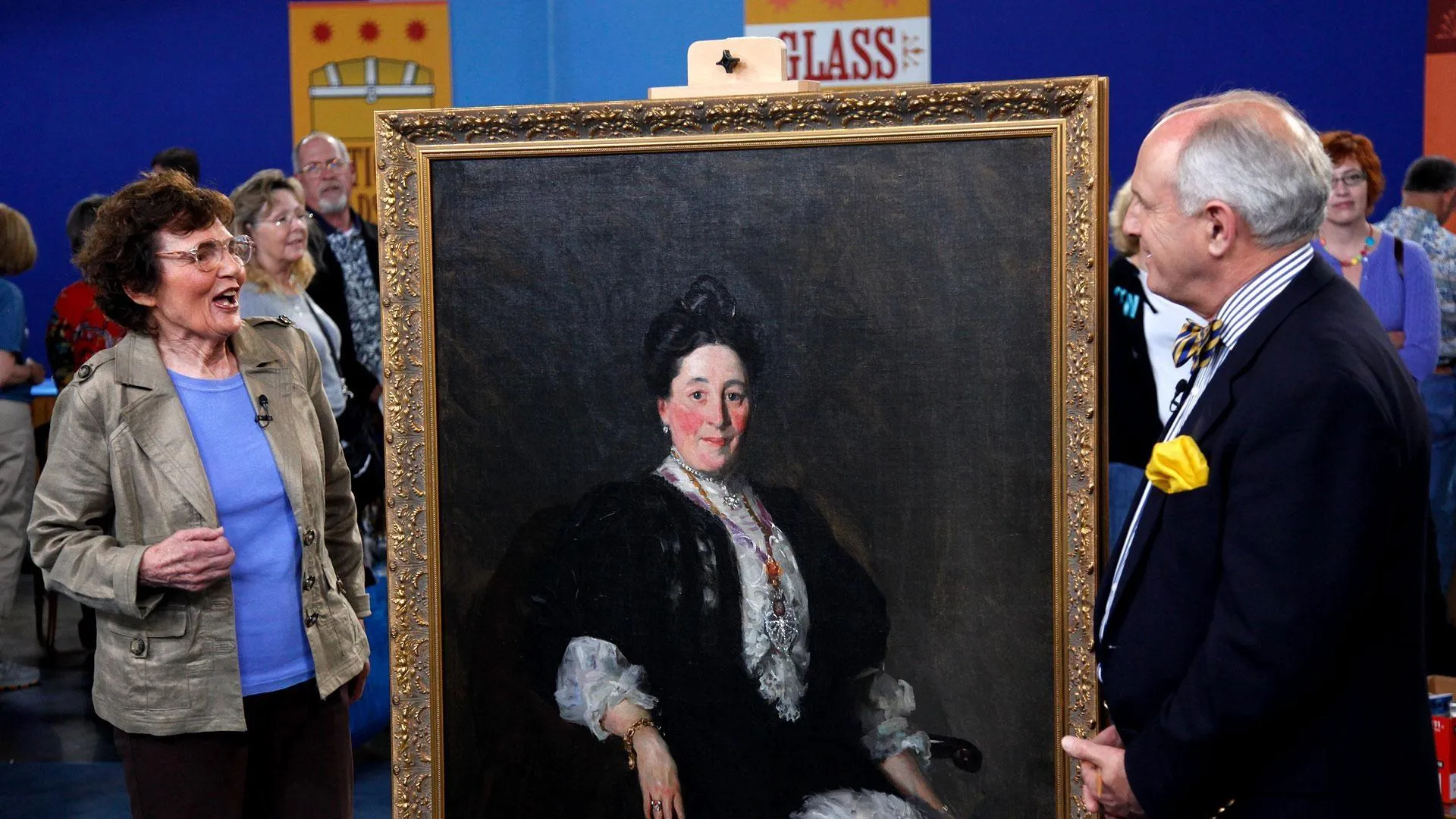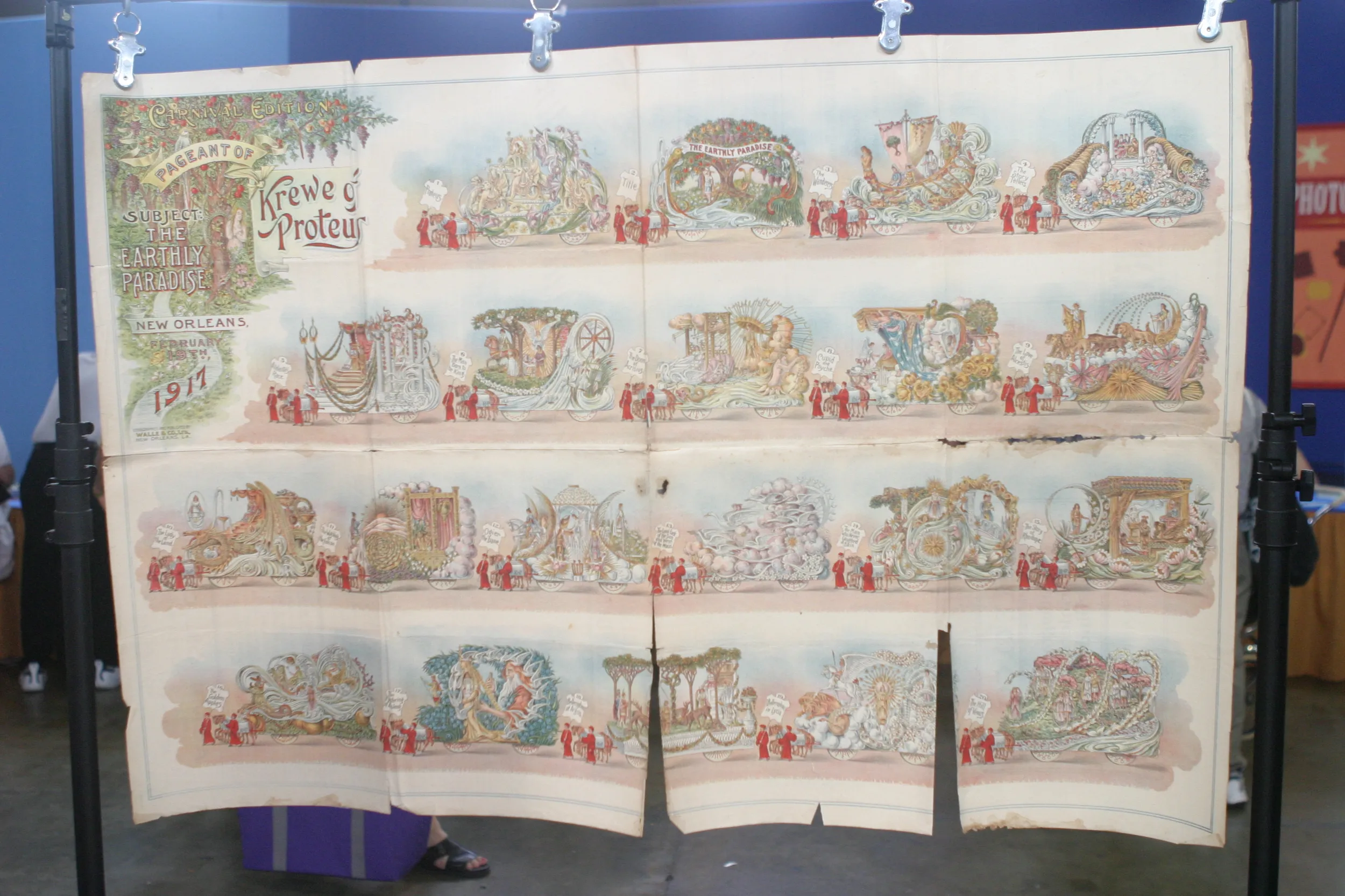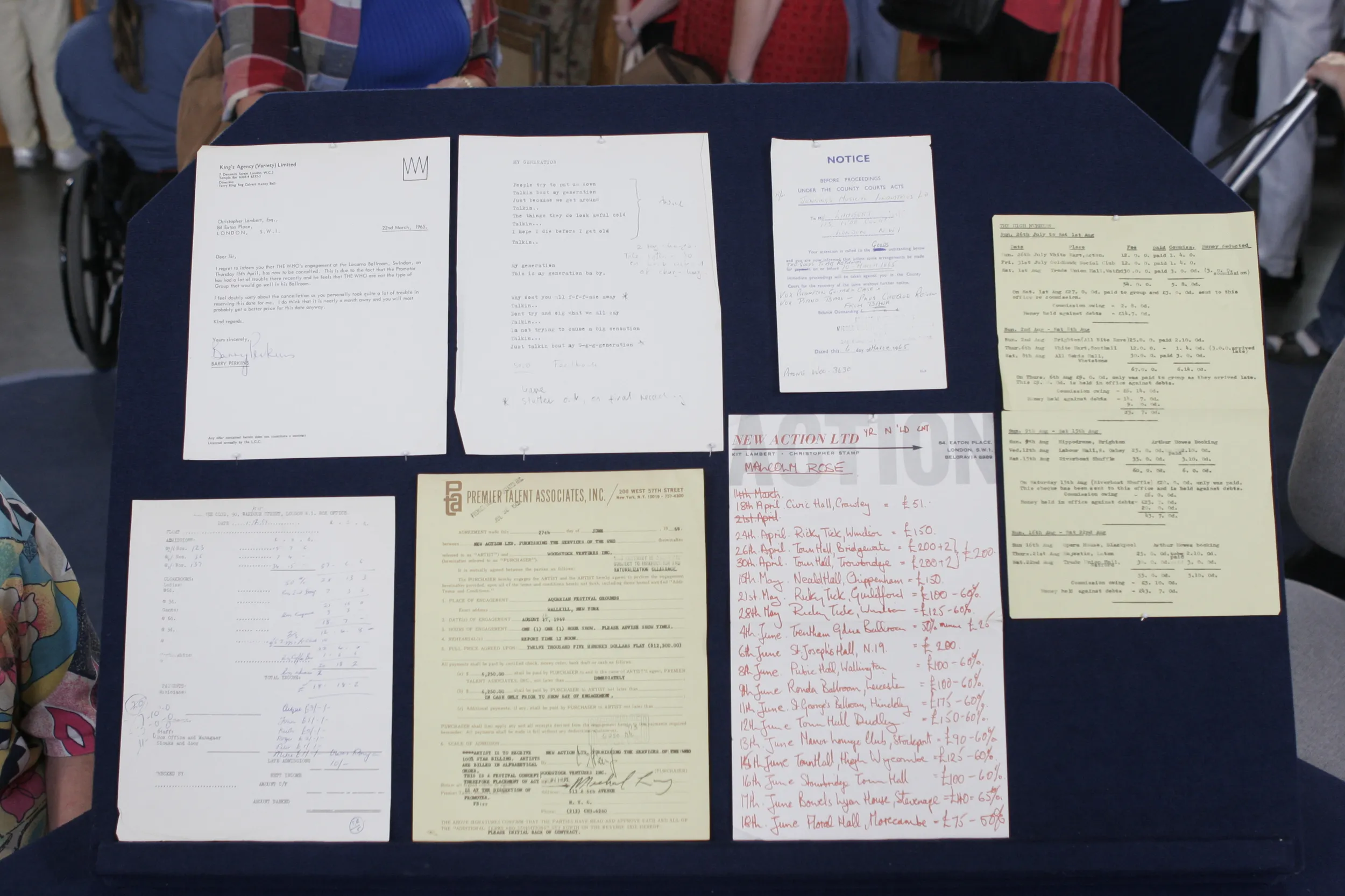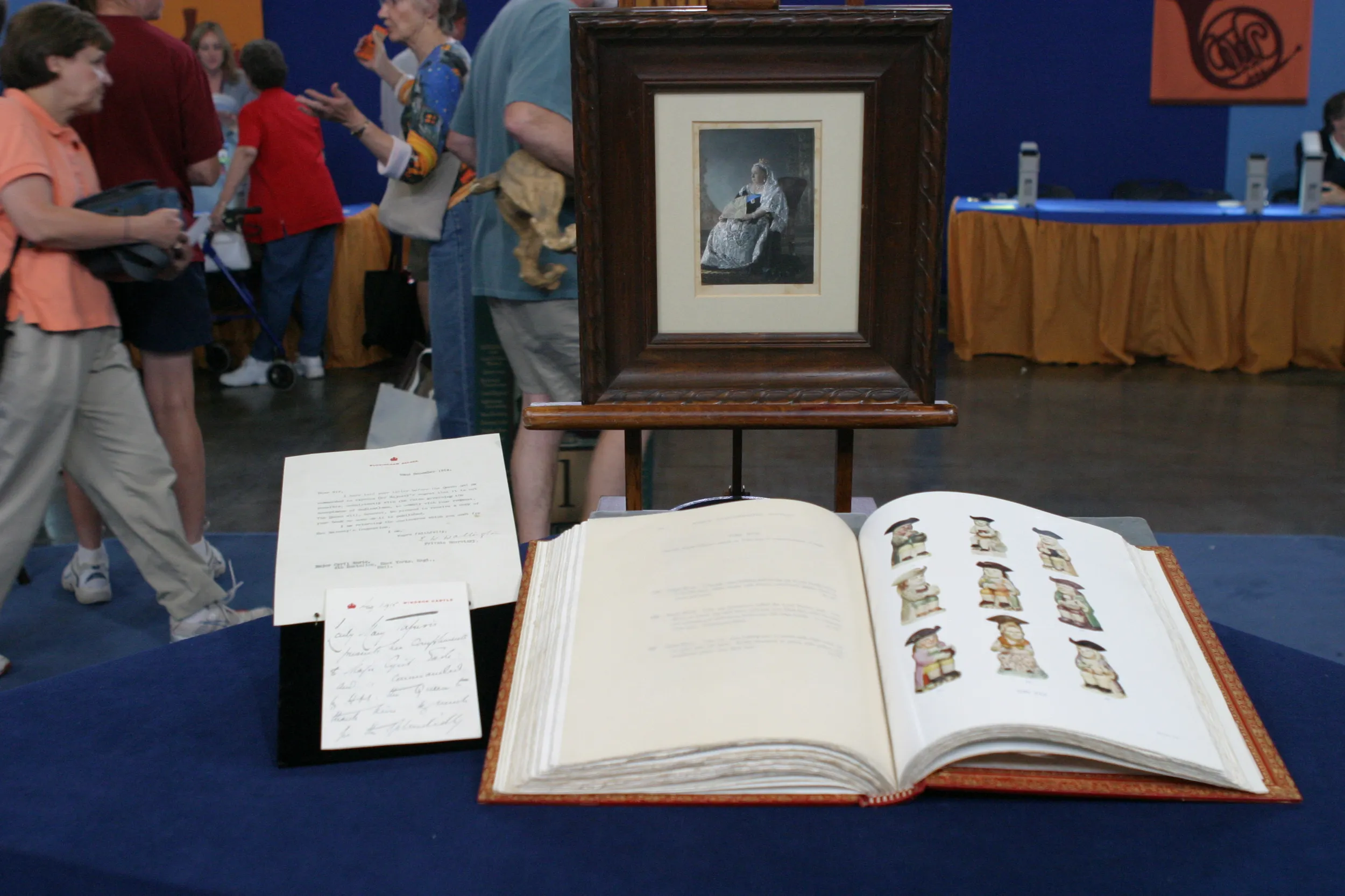GUEST: I would go to the Stanford University Renaissance Fair, a big flea market, every year. And this was in the '60s. And these were on a table one day. And there was another woman and I sort of eyeing them together, and we each picked out and scooped them all up. I love the Deco period; I just like the artwork a lot.
APPRAISER: Well, all three of these were done by different artists. They do have one thing in common-- one man, whose name is Frank Pick. And Frank Pick began as the publicity director for the London Underground in the 1910s, 1920s, and that's when the campaigns really began to take off. And under his guidance, he thought, "People ride the subway to work every day, but wouldn't they ride the subway more, wouldn't we make more money, if we could convince people to ride the subway for leisure activities?" So he basically began an advertising campaign, and every month the Underground would issue dozens of new posters. And one of the great things about London Underground posters that's different from other posters is that they actually tell us how many were printed. And here we can see that there were 1,000 of these printed in 1928. Now, because they were printing so many different posters advertising leisure activities, the styles were all over the place. And I'm just so happy that you brought three completely different styles. Beginning here we have this great image of not just the light at the end of the tunnel but the bouquet of flowers at the end of the tunnel, this sort of abstract depiction of the tunnel itself. It gives you this feeling that through the doom and gloom, you can arrive at a much more beautiful destination.
GUEST: Mm-hmm.
APPRAISER: And then in the middle, we have a really classic Art Deco stylization. The concept here is speed, so you have the lightning bolt, you have the bow and arrow. You also have the London Underground roundel, the logo for the Underground, which was something else that Frank Pick worked on. He was really into corporate identity. You have the image of the sleek train. It's an excellent image, and it epitomizes the style and the design sense that the London Underground was trying to convey back in the 1930s. And then next to you, we have something that really emphasizes all the different leisure activities. They're saying ride the train to dog races, ride the train to the theater, ride the train to the movies. Now, how much did you pay for these?
GUEST: They were a dollar apiece.
APPRAISER: A dollar apiece back in the 1960s?
GUEST: Correct.
APPRAISER: On this poster closest to me, I would say, at auction, the estimate for this would be $2,000 to $3,000. I think on the poster in the middle, which is this great Art Deco stylization, I would say at auction today, $3,000 to $4,000.
GUEST: Okay.
APPRAISER: Now, the poster closest to you, in many ways, while it's not my favorite artistically, it really is the most interesting of the three because it's extremely rare to see Mickey Mouse used on an advertising promotion that's not related to Disney proper.
GUEST: I thought so, too.
APPRAISER: They didn't just use Mickey Mouse in a rogue fashion. As you can see under Mickey Mouse's foot, it comes with the copyright permission of the Walt Disney Company, so this really was a legal usage of one of the world's most famous characters. And we would estimate that piece also at $3,000 to $4,000. Now, a quick tabulation, these three posters, I would estimate together at $8,000 to $11,000.
GUEST: Very good. Very good indeed. Thank you very much.











